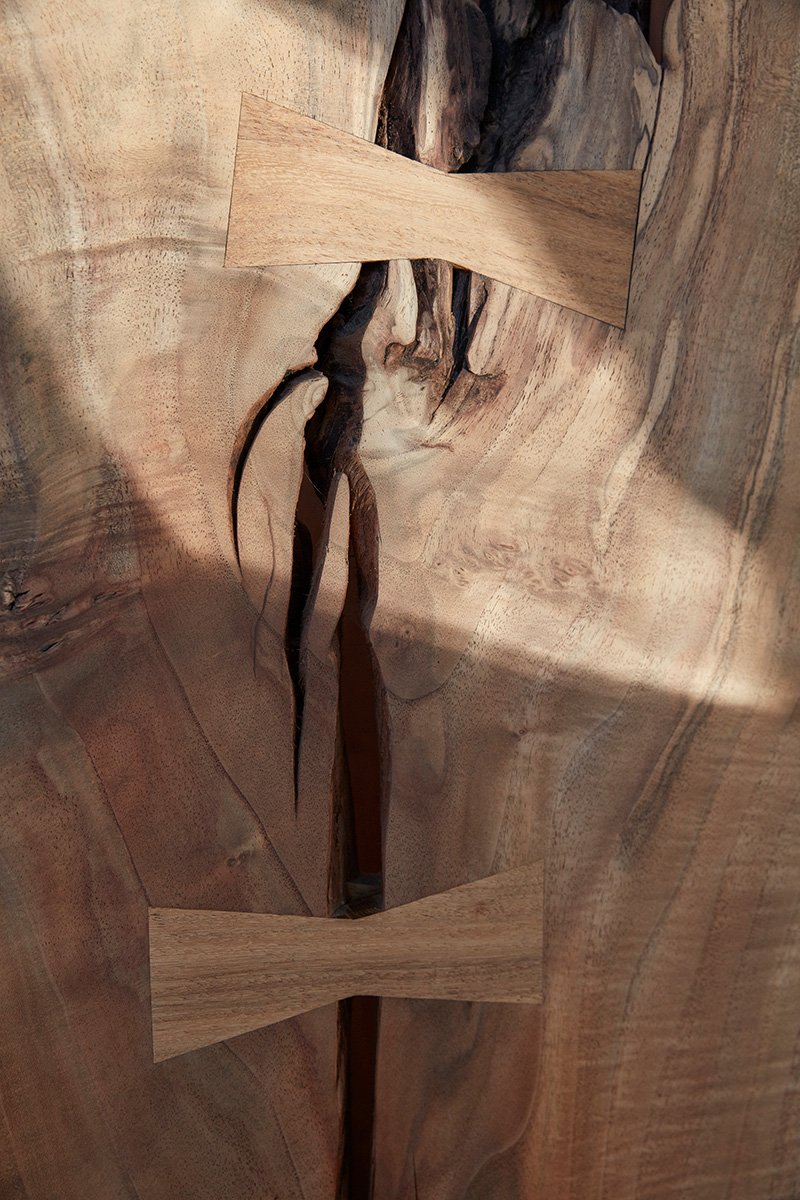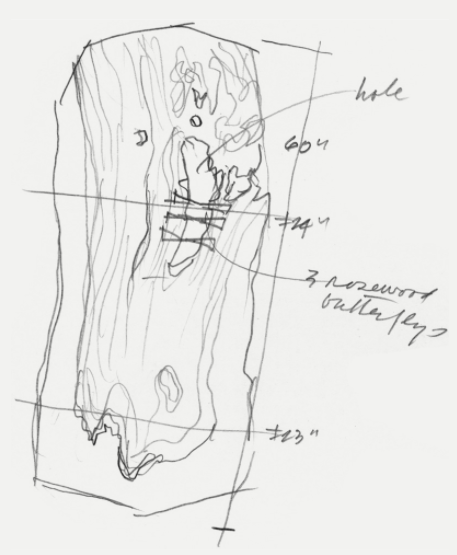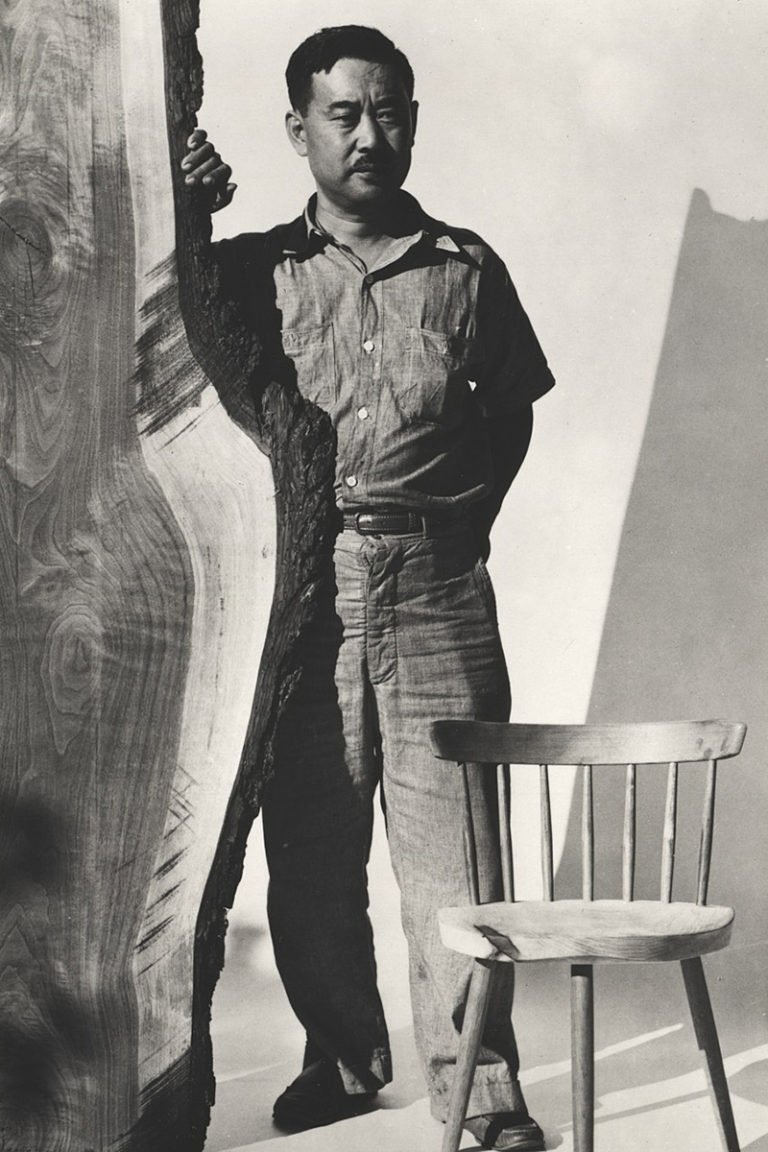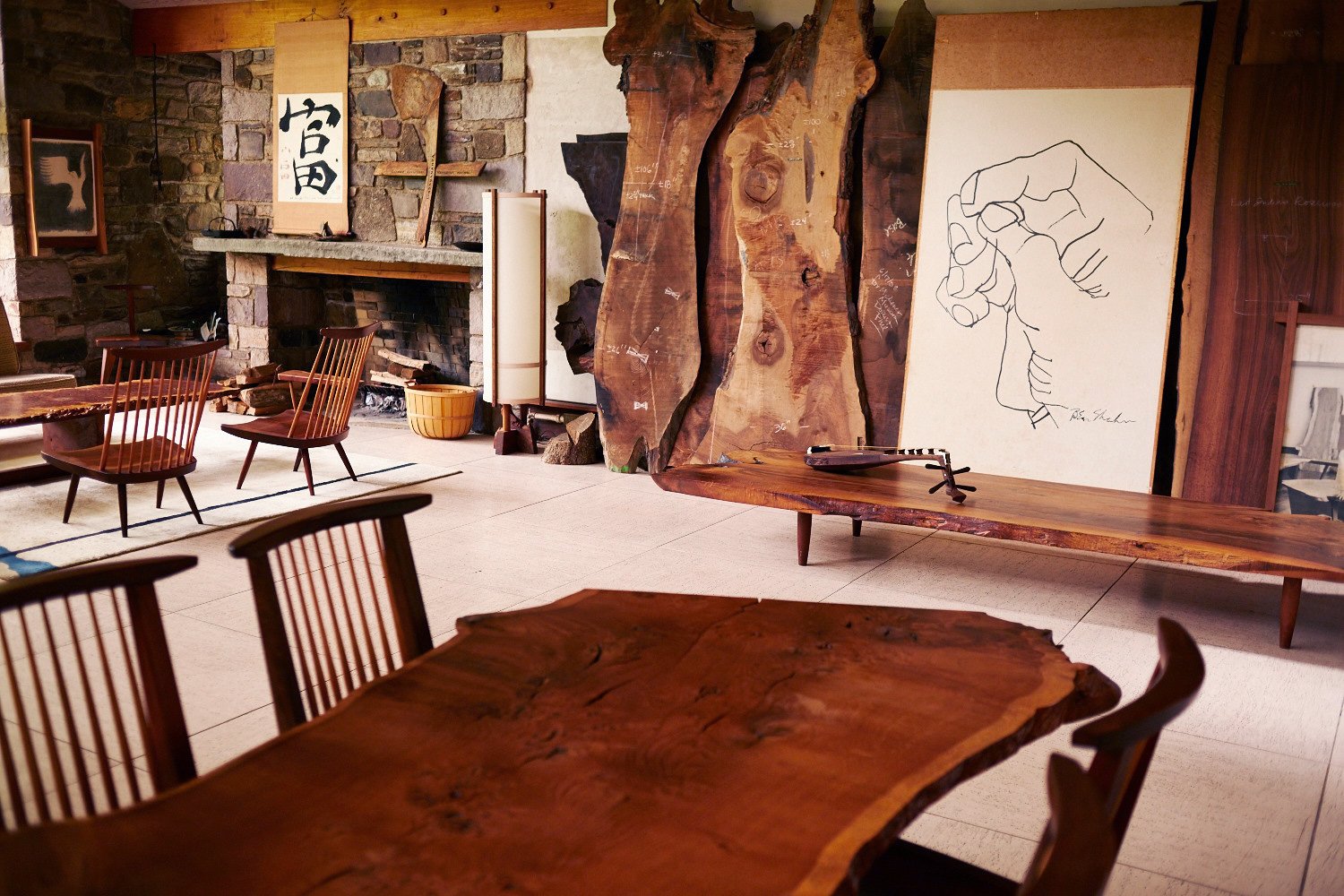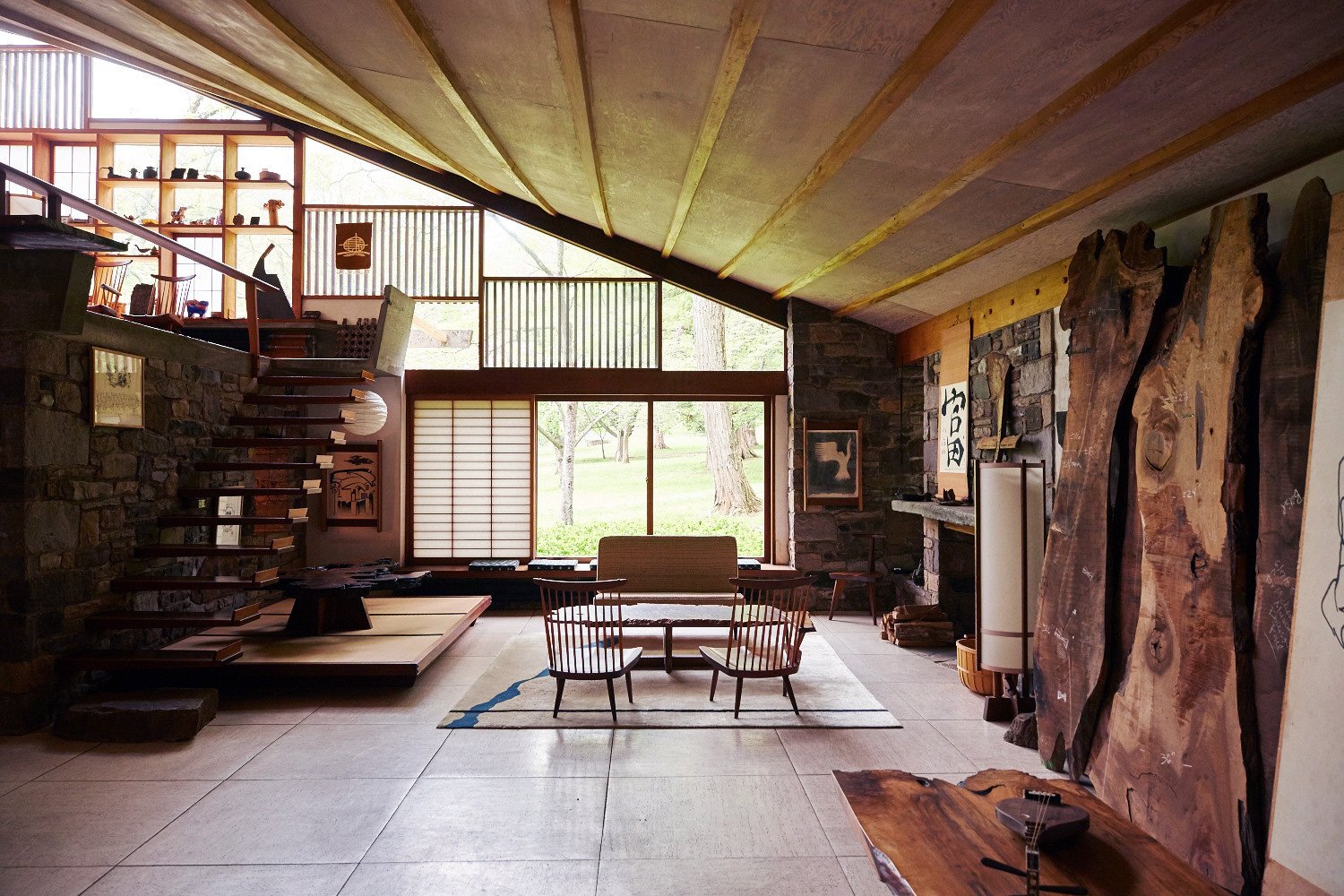george nakashima
“To help in the installation of natural forms in our environment, I have chosen wood as a material, warm and personal, with many moods from which one can choose.”
-George Nakashima
“Many of our pieces are one-of-a-kind and cannot be reproduced.
They often depend on a particular board with extraordinary
features. Such boards are at times studied for years before a
decision is made as to its use, or a cute made at any point.”
Earth month musings… how to make respect for nature inherent to the design of our built environment? No one lived and worked by that philosophy better than iconic furniture designer and maker George Nakashima. Nakashima’s philosophy on woodworking, craftsmanship, and respecting nature is a powerful example of sustainable design in action.
Nakashima took into consideration the “soul of a tree” (and wrote a book by the same name), believing that each tree’s soul and personality lives on through our homes and furniture. Wood is not an inanimate object, it lives and breathes even after it is harvested. The inherent natural beauty of this material is to be understood, respected, and retained as much as possible in the final product. Deep respect for trees as humans’ biggest connection to nature. Working with the byproducts of land-clearing and other discarded wood, creating furniture was a way of salvaging this beauty and connection.
“A tree is our most intimate contact with nature.”
Born in Spokane, WA in 1905 to Japanese parents, Nakashima earned degrees in architecture and engineering at University of Washington and MIT, then spent the majority of the 1930s traveling and working abroad in France, Japan, and India, all of which had a profound impact on his outlook on life and design.
Upon returning to the U.S. in the early 1940s, Nakashima and his wife Marion settled briefly in Seattle, before being forcibly uprooted in 1942 by Executive Order 9066. George, Marion, and their newborn daughter Mira were incarcerated at the Minidoka internment camp in Idaho alongside 120,000 other Japanese-Americans.
Antonin Raymond, Nakashima’s former boss in Tokyo, secured their release in 1943 with a place to stay on his farm in New Hope, PA.
The Nakashimas acquired their own property in New Hope and the studio is born. Over the years, buildings were added to the property for the family’s homes and workspaces. Nakashima’s children run the studio and the foundation, continuing to carry on his legacy today. Touring the studio and grounds is high on my design travel to-do list.
all images and information courtesy of nakashimawoodworkers.com




